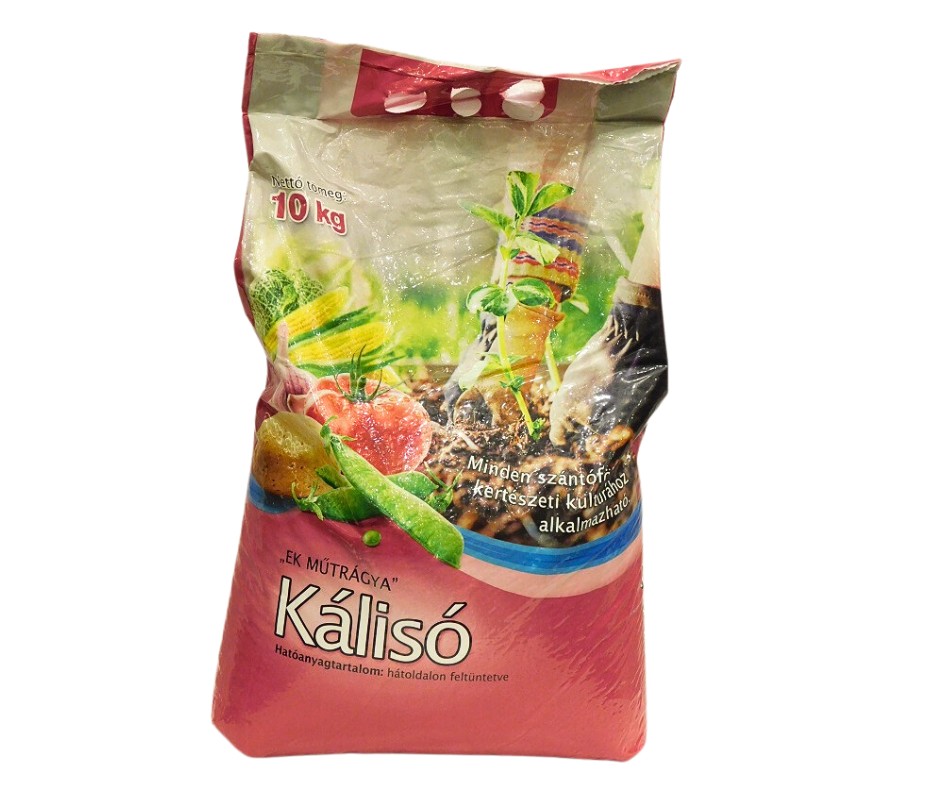Potash 10 kg
| HUF 4,632 * (nettó: HUF 3,647) | |
Kálisó
Potash salt is the most concentrated potassium fertiliser (up to 60%), based on potassium chloride, and is best recommended as a base fertiliser for winter cereals and rape. The vast majority of potassium fertilisers used in arable crops are potassium chloride-based, as this is the cheapest source of potassium and is an excellent way of replenishing and maintaining soil potassium reserves.
What role does potash play in plant development?
Its role is very important in the water balance of plants. In its absence, the water transport capacity of plants is reduced. In soils well supplied with potassium, the drought tolerance of plants is improved. Good potassium supply results in high turgor pressure, which promotes plant growth. Plants well supplied with potassium have higher energy levels, which results in a more intensive metabolism, which increases the fungal, frost and drought tolerance of the plants.
Of the nutrients, potassium is the most abundant in the plant after nitrogen. The young parts are rich in potassium, while the ageing parts accumulate calcium.
The effect of potassium on the life cycle of plants:
- It helps in the metabolism (sugar, starch), synthesis and breakdown of carbohydrates.
- They activate enzymes (their role has been demonstrated for more than 60 enzymes).
- They help N uptake and thus have a direct effect on protein synthesis.
- They are involved in the neutralisation of essential organic acids.
- They regulate leaf respiratory openings and cell water relations.
- They help the formation of phosphates (especially ATP).
What are the diseases that threaten our plants in case of potassium deficiency ?
Potassium-deficient plants wither more quickly, their leaves shrivel, growth is stunted and leaf size is smaller. The symptoms of potassium deficiency first appear in the leaves of older plants, with potassium escaping to younger organs. Necrotic white or brown spots form on the edges of the leaves as a result of potassium deficiency.
Where can kale be used ?
Potassium fertiliser can be applied to all crops except chlorine-sensitive crops.
Use of potassium potash
Basic fertilisation in arable crops and horticultural crops (not chlorine sensitive): rotated in autumn, worked into the soil to the depth of the root zone.
For potassium-demanding crops (maize, rape, sunflower, sugar beet), it is advisable to apply higher doses of autumn potash underneath because of the positive potassium response. If the phosphorus supply is otherwise adequate or the previous crop has been fertilised with phosphorus, this can be omitted and no other complex fertiliser need be applied during the year.
Recommended rate:
100-400 kg/ha (10-40 dkg/10m2).
| Weight: | 10 kg |
|---|---|
| Width: | 480 mm |
| Height: | 70 mm |
| Length: | 330 mm |
| Aviability: | 1-4 nap |
| Basic sales unit: | db |
Login
Login
